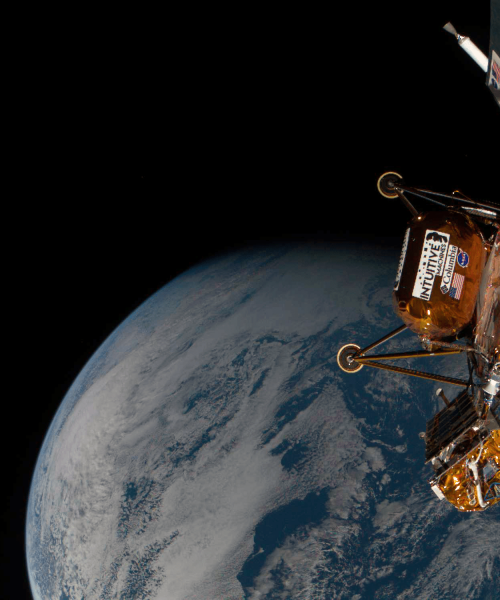Spacewalks are definitely one of humanity’s coolest feats—exploring outer space with nothing but a spacesuit to keep you safe from the cosmos. As awe-inspiring as they are, though, spacewalks are also incredibly dangerous. And the crew of SpaceX’s Polaris Dawn are planning to attempt one this week and make history with the first spacewalk from a commercial spaceflight after their launch on Tuesday September 10th.
The very first spacewalks—known more formally to NASA as extravehicular activities, or EVAs—took place all the way back in the 1960s. In March 1965, the USSR beat the U.S. to the punch when Aleksei Leonov floated out of his space capsule. The U.S. (to keep up in the space race) performed its first spacewalk just months later with Edward White aboard the Gemini 4 mission.

In these early days of space exploration, things were a bit riskier. No one knew exactly how things would play out on a spacewalk, as these were the first times humans had ever tried these maneuvers. And the astronauts definitely ran into issues: Leonov’s space suit became rigid and hard to move when it was pressurized, and he couldn’t fit back into the spacecraft’s hatch without letting some of his suit’s air out. White similarly found it was much harder to move in the suit during the EVA than anyone had expected.
These early spacewalks also uniquely lacked one safety feature: an airlock. Like in any sci-fi film or book, an airlock helps to separate a liveable, oxygenated, pressurized component of a spacecraft from the vacuum of space. When an astronaut steps into the airlock, the air can be let out of that compartment without compromising the habitability of the whole spacecraft. The International Space Station, for example, has an airlock to allow astronauts in and out once they’ve gotten into their suits. The first spacewalks like Gemini instead just depressurized the entire spacecraft—meaning if something happened with the suits, the astronauts didn’t have a safe haven to retreat to quickly.
In the decades since NASA’s first forays into space, EVAs have become a routine part of life in space for an astronaut. Astronauts like Buzz Aldrin completed spacewalks out onto the Lunar surface, and later astronauts spacewalked to assemble the International Space Station. Five missions in the 1990s and early 2000s also featured spacewalks for astronauts to fix and upgrade the Hubble Space Telescope, one of astronomy’s major workhorses, responsible for countless cosmic discoveries.

These years of EVAs have taught us many lessons about how to safely exit a spacecraft, and how to maneuver once you’re out there in the void. In 1984, astronaut Bruce McCandless tried a spacewalk totally untethered, using a jetpack-like contraption called the “Manned Maneuvering Unit” to move around. NASA has developed specialized tools for astronauts to use while in their bulky spacesuits, and refined their system of handholds to help astronauts navigate the outside of spacecraft, including the Space Shuttle and the International Space Station. They even created a training routine to help astronauts get experience before being sent out into the high stakes environment of outer space, using a giant swimming pool known as the “Neutral Buoyancy Laboratory” to simulate spacewalk conditions.
But now Polaris Dawn is going all the way back to 1965, depressurizing the entire spacecraft such that the crew have to rely on just their suits to keep them safe. “You’re throwing away all the safety of your vehicle, right? And it now comes down to your suit–it becomes your spaceship,” said mission commander Jared Isaacman in a press conference. Although such airlock-less EVAs have been done before, it’s definitely riskier than the modern standard of airlocks as on the ISS.
[ Related: SpaceX reveals new sleek spacesuits ahead of upcoming historic mission ]

It’s this suit’s maiden voyage too, the first time it’ll be tested in the real arena of outer space. Although equipment is rigorously vacuum tested before any mission, it’s always riskier the first time any tool goes into orbit—problems you don’t expect can always pop up, and that has certainly happened throughout the history of spaceflight. Polaris Dawn is also going to be venturing to a part of space no one has reached since the 1970s, which comes with possible hazards of extra radiation and micrometeorites that could potentially puncture a space suit.
Like any good space mission, though, the Polaris Dawn team has rigorously prepared for contingency plans if something goes awry. “While every EVA is risky, I would not say this is extraordinarily risky,” said space industry consultant Laura Forczyk in New Scientist. “They have gone through every single scenario, they have backups and redundancies for every scenario, they are so well-prepared.”
And if they’re successful, this is certainly a momentous entry into the history of human spaceflight: the first spacewalk completed by a non-government mission, and perhaps even a step towards SpaceX’s ultimate goal of getting humans to Mars.
“It’s not lost on us that you know, it might be 10 iterations from now and a bunch of evolutions of the suit, but that someday, someone could be wearing a version of which that they might be walking on Mars,” said Isaacman in a press release. “It feels like a huge honor to have that opportunity to test it out on this flight.”





